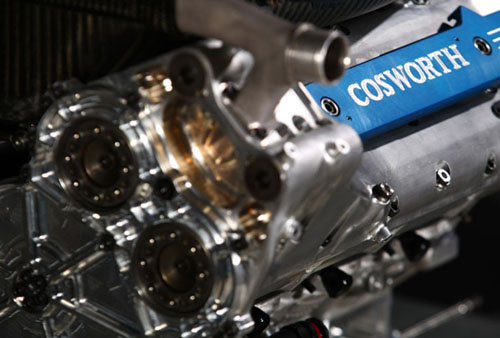
Yes, that’s right. The FIA’s World Motor Sport Council (WMSC) has approved new regulations which will see 1.6-litre four-cylinder engines replace the current 2.4L V8s from 2013. The goal is to be more eco friendly, as the smaller powerplants are expected to be 35% more frugal, whilst providing the same level of performance. Energy recovery systems and additional energy management will be utilised to ensure this is possible.
“The WMSC approved the introduction of a new specification engine from 2013, underlining the FIA’s commitment to improving sustainability and addressing the needs of the automotive industry. Following dialogue with the engine manufacturers and experts in this field, the power units will be four cylinders, 1.6 litre with high pressure gasoline injection up to 500 bar,” FIA explains.
The new regulations will also further limit the number of engines at allocated to each drivers. Currently, it’s eight units a season, but this will be limited to five in 2013 and four for subsequent seasons. Rev limits on the new engines will be reduced from the current 18,000 rpm to a maximum of 12,000 rpm.
At the same WMSC meeting, FIA bigwigs also made some changes to the rules for 2011. Among the major revisions are the removal of the ban on team orders, the introduction of driver-adjustable rear wings, outlawing double diffusers, stricter bodywork deflection tests and a requirement for one gearbox to last five race weekends, from the current four.
Looking to sell your car? Sell it with Carro.


AI-generated Summary ✨
Comments generally support the decision to lift the ban on team orders, citing examples like McLaren and Ferrari to illustrate their subtle use in races. Many express excitement about the return of turbocharged engines, recalling the powerful and iconic turbo era of the 80s, and are optimistic that 1.6L turbo engines can match or surpass current performance. Several commenters debate engine sizes and configurations, suggesting that smaller, turbocharged engines could make F1 more attractive and technologically advanced. There is also discussion about the potential for increased automation, the importance of racing technology as a benchmark for road cars, and the possibility of attracting more manufacturers to F1. Overall, the tone is optimistic about the technological innovation and strategic changes shaping F1’s future.